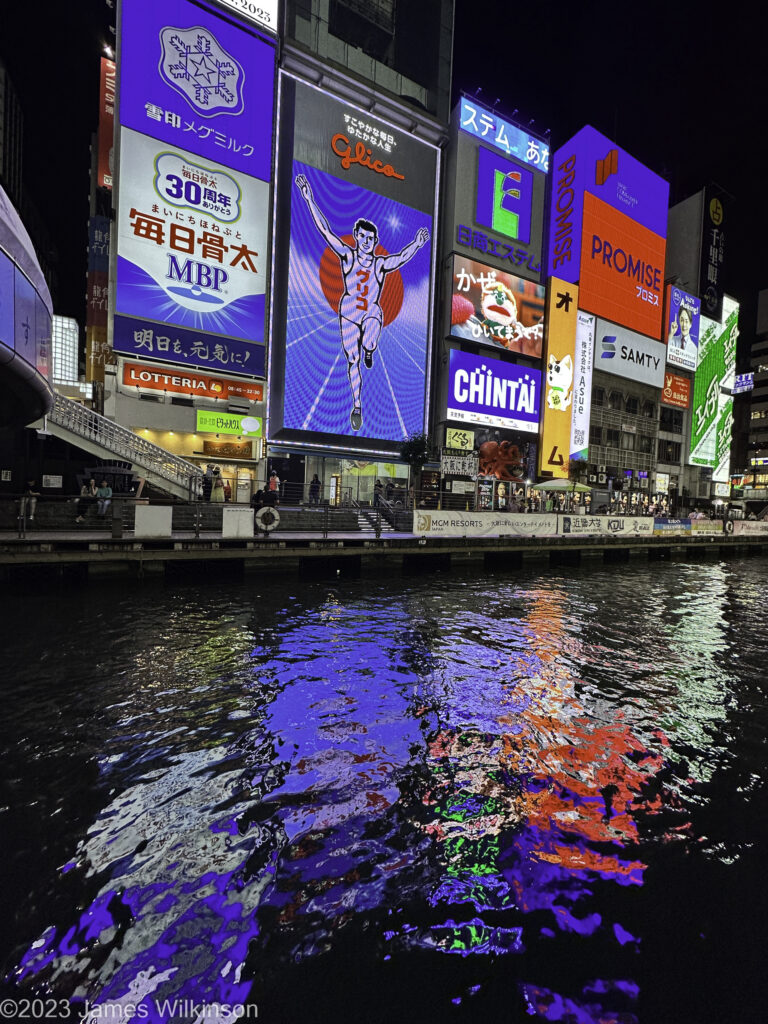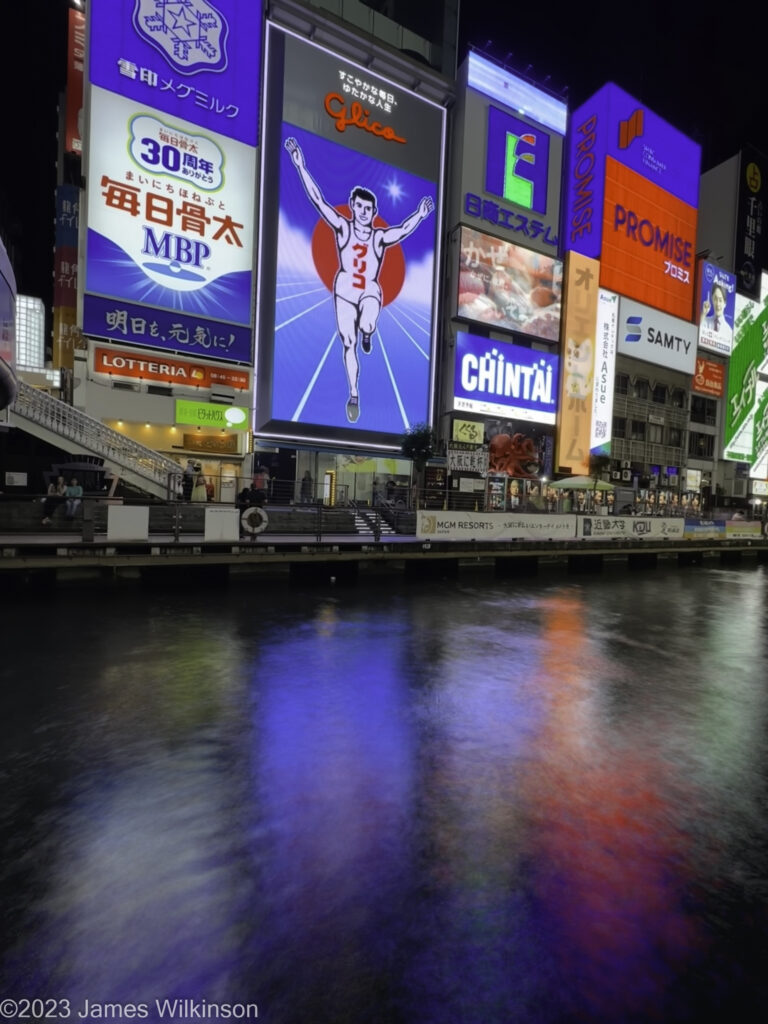Problem: iPhone camera photo moire – I was photographing the ‘Vegas-like’ riverside signage at Osaka’s Dotonburi and discovered a terrible moire pattern in the iconic Glico Runner sign (photo 1). My Olympus digital camera did not have this problem but I preferred the glassy reflections of my iPhone photos. My Olympus photos were long exposures so the reflections were muted.
Solution: iPhone Live Image Long Exposure – since I had iPhone live photo ON, I created a long exposure (photo 2). That eliminated the herringbone pattern but also muted the color reflection like my Olympus camera long exposures. I loaded the two iPhone photos – the moire image & the long exposure – as layers into Photoshop. After aligning the layers since the long exposure crops a bit. I masked the long exposure image completely, setting it as the foreground layer. Then I erased everything on the long exposure layer, revealing everything from the short exposure except the Glico sign. I exported this combined image as a jpg with non-moired sign and glassy river reflections (photo 3).
Perhaps, if I manually adjusted the shutter speed in the iPhone camera, the problem may have been avoided. But I did not notice the issue until the next day so this was the best solution.



Cell phone camera technology & AI are outpacing standard digital cameras by miles. But a digital camera in the hands of a competent photographer can still generate phenomenal photographs beyond the scope of a cell phone camera. At least for now in mid-2023 – think wildlife, birds, sports, and astro photography as examples. Still the adage ‘the best camera is the one you have at hand’ is true and that tends to be your cell phone camera. But even with the latest iPhone digital imaging technology, great weather-sealing, and manual camera apps, sometimes the cell phone camera falters.
